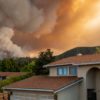It’s likely that 2024 will be the hottest year on record, with all six months so far exceeding the pre-industrial average by 1.2°C or more. Furthermore, June 2024 was the 13th consecutive to set a new record for warmest month. Meteorological data shows that the average temperature records keep climbing, reflecting an alarming trend in global warming. This extreme heatwave has had profound effects worldwide, with the United States experiencing significant impacts.
The sweltering temperatures of June 2024 are not merely statistical outliers but indicative of a broader, ongoing increase in global temperatures. Climate scientists attribute this unprecedented heat to a combination of natural climate variability and human-induced climate change. The consequences of this warming are becoming increasingly evident, with widespread environmental and societal impacts.

June Average Temperature Anomalies Globally since 1850 show the steady rise in average temperatures since 1980. [Source: NOAA – National Centers for Environmental Information (NCEI)]
Impact on 2024 Fire Activity in the USA
The record-breaking heat of June 2024 has directly influenced fire activity across the United States. High temperatures, coupled with prolonged periods of dryness, have created ideal conditions for wildfires to ignite and spread. Many regions, particularly in the western United States, have faced an extraordinary number of wildfires, straining firefighting resources and causing widespread devastation. Just last week, NIFC raised the National Preparedness Level to Level 5, the highest the scale goes. Level 5 on the scale indicates that the national incident count and potential warrants the maximum amount of firefighting resources to help fight the activity.
California, a state already notorious for its wildfire season, has seen an alarming rise in fire incidents. The intense heat has dried out vegetation, making it highly flammable and more susceptible to ignition. The resulting wildfires have been more frequent and severe, leading to significant damage to property, ecosystems, and air quality. Other states, such as Oregon and Washington, have also experienced a notable increase in fire activity, with similar destructive consequences. The next several weeks are the peak of our fire season in the West. With the inclusion of much of the higher elevation areas now dry enough and susceptible to burn.
June 2024 the Hottest, For Now
The correlation between the unprecedented June temperatures and the surge in wildfire activity is clear. The extreme heat has not only increased the likelihood of fires but has also made firefighting efforts more challenging. Unfortunately, in the long term, the breaking the current warmest temperature records seems like a ‘For Now’ situation. The World Meteorological Organization (WMO) is predicting that the global mean near-surface temperature for each year until 2028 will be on trend with the last decade. The group expects each year to be between 1.1°C and 1.9°C higher than the 1850-1900 baseline. They also say that there’s an 86% chance that at least one of those years will set a new temperature record, and a 47% chance that the global temperature averaged over the entire five-year period will exceed 1.5°C. As the summer of 2024 progresses, the record-breaking heat of June serves as a stark reminder of the urgent need to address climate change.




